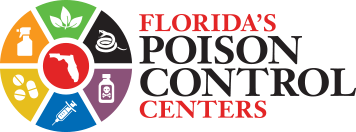Drugs of Abuse
Sadly, most deaths from poisoning in Florida now involve drugs of abuse, whether misused prescription medication, illegal drugs, or a combination of both. Some of the most common and deadly illegal drugs seen by poison centers are described below. Several callers describe using many drugs simultaneously. Combining multiple drugs increases the risk of serious poisoning and death. Calls to poison centers are always confidential and our goal is to save lives. In cases of emergency, poison centers will tell a caller if they need to call 911.
Poison control centers also assist emergency medical personnel in treating drug overdoses or assessing patients exposed to drugs of abuse. Medical toxicologists are available 24/7 for physician consultations.
For more details about poisoning in Florida, see the Florida Department of Health report from the Injury Prevention Program or the Florida Department of Law Enforcement Drugs in Deceased Person Report.
Cocaine
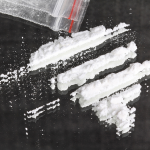 What is Cocaine?
What is Cocaine?
The coca plant has been used as stimulant for centuries. The street drug cocaine is derived from the coca plant and treated with chemicals to produce the well-known white powder (sometimes called snow or blow). In production and distribution, the cocaine is “stepped on” or diluted by other ingredients to make a bigger batch. It has been known to contain talc or mannitol.
How is Cocaine Used?
The powder is snorted into the nose or dissolved in liquid for injection. Cocaine that has been processed into a solid rock is heated to create smoke-able vapors (crack).
How Does Cocaine Affect the Body?
The high from cocaine sets in quickly after injection or smoking. The rush is so intense that the stimulation of the brain’s neurotransmitters create a strong craving to re-use the drug. The typical high from cocaine causes increased energy, hyperactivity, increased body temperature, high blood pressure and decreased appetite. It stimulates the body’s fight-or-flight response and creates a fast heartbeat.
What Are Other Dangers Associated With Cocaine?
In some users, the stimulation of the brain and heart results in heart attacks or stroke. Products used in production or to dilute the cocaine into bigger batches often contain toxic contaminants such as levamisole or local anesthetic agents. A big danger from street drugs is the user’s inability to know the true ingredients.
Heroin
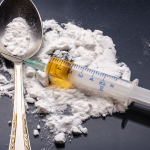 What is Heroin?
What is Heroin?
Heroin is processed from morphine, a substance naturally occurring in seed pods of the poppy plant, and is grown in Asia, and Central and South America. The most common form found in Florida is a white powder imported mostly from Colombia. This powder is frequently “cut” with various other ingredients like sugar, quinine, or other drugs. Heroin is a Schedule I drug under federal law since it is highly addictive and has been deemed unsafe for medical use.
Pills such as oxycodone, oxymorphone, buprenorphine, hydrocodone, morphine, and codeine are prescription pain relievers in the same chemical family as heroin. Because there has been a crackdown on “pill mills” in Florida, some people addicted to these pain medications are now seeking out heroin, and death rates from heroin are climbing in our state. In 2013, according to the Florida Department of Law Enforcement, deaths from heroin increased 78% over 2012, and of those found dead with heroin in their bodies, 97% of these fatalities were attributed directly to the drug.
How Does Heroin Affect the Body?
Users of heroin describe a rapid sense of extreme euphoria or “rush” followed by a “twilight” relaxed state. When a strong dose is taken, a person can experience cold and clammy skin, a slow heartbeat, constricted pupils, muscle weakness, lethargy, coma and shallow breathing. Finding a safe dose can be difficult for users since the quality of the drug varies over time and by city. Heroin is highly addictive, and stronger doses may be needed to experience the expected euphoria, putting the user at extreme risk of overdose. Habitual users of any opioid will need medical help in stopping their drug use. Sudden discontinuation of these drugs can lead to serious or even fatal withdrawal.
How is Heroin Abused?
Heroin is generally smoked, injected, or sniffed.
How Widespread is Heroin Abuse?
According to the Substance Abuse and Mental health Administration’s 2013 National Survey on Drug Use and Health, 0.1% of people over the age of 12 report being current heroin users. Use of heroin is much less common than use of cocaine (0.6%), methamphetamine (0.2%), and hallucinogens (0.5%). That being said, heroin use, once concentrated in urban areas, is now growing in popularity in suburban youth, and several states (including Florida) have noticed marked increases in heroin deaths in recent years.
How is a Heroin Overdose Treated in the Hospital?
Any person that cannot be awakened after taking heroin should be taken to the hospital immediately. Do not let the person “sleep it off.” A heroin overdose is treated like any other narcotic overdose with a reversing agent (naloxone), and by supporting body functions possibly with the use of a ventilator (breathing machine). Most overdoses can be rapidly reversed if caught in time.
Possible Symptoms of Overdose
- Slow breathing (less than ten breaths a minute)
- Seizures
- Small, pinpoint pupils
- Being tired, nodding off, or passing out
- Dizziness
- Weakness
- Apathy (they don’t care about anything)
- Cold and clammy skin
- Nausea
- Vomiting
- Noisy breathing (a “rattle”)
Molly (a.k.a."Ecstasy, MDMA, Adam, XTC, X")
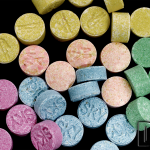 What is Molly?
What is Molly?
Molly is a hallucinogenic amphetamine made in street labs. It comes in pill form in many colors and designs. While Ecstasy was popular in the 1990s, Molly is popular in the present day. Molly is said to be a more pure form of Ecstasy, which is untrue. Molly is often contaminated with methylone, a synthetic cathinone known by the street name “Bath Salt.”
Who Uses Molly and Why?
As a mind-altering hallucinogen with a speed effect, Molly is taken to provide energy in dance clubs or to combat the effects of drugs such as downers or depressants.
What Are Some Signs of Molly Use?
Users chew gum or suck on pacifiers to relieve tension in jaw muscles. High body temperatures cause users to remove layers of clothing and consume lots of water. Irritability and agitation may lead to taking alcohol or downers for a calming effect.
What Are the Dangers of Molly?
The normal dose is close to the toxic dose. When a person gets a strong tablet, they can experience fever, hallucinations, agitation, high blood pressure, irregular heartbeat, fast heartbeat, stroke, upset stomach, jaw clenching, muscle spasms, seizures (convulsions), sweating and dilated pupils. Deaths are usually due to complications from fevers up to 108° or seizures. For more information, visit U.S. Drug Enforcement Administration.
How is a Molly Overdose Treated in the Hospital?
Support of breathing may involve use of a breathing machine (ventilator). Medications may be needed to control blood pressure, fast heart rates, agitation or convulsions. Intravenous (IV) fluids and cooling measures help treat high fevers.
Synthetic Marijuana or Synthetic Cannabinoids (a.k.a. “Spice, K-2”)
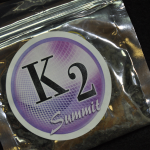 What is Synthetic (Man-Made) Marijuana?
What is Synthetic (Man-Made) Marijuana?
“Spice” and “K-2” are just two names for products sold as incense. There are many product names such as Yucatan Fire, King Krypto, Mr. Nice Guy, K-3, Red Magic, Blueberry Medication and Scooby Snax Potpourri. Herbs like baybean are sprayed with chemicals which may include JWH-015, JWH-018, JWH-019, JWH-073, JWH-081, JWH-122, JWH-200, JWH-203, JWH-210, JWH-250, JWH-320, JWH-398, HU-210, HU -211, CP-47, 497, cannabicyclohexanol, AM-694, AM-2201, RCS-4. Many new forms of cannabinoids are being created as soon as some of the compounds are classified as illegal. There are so many forms that it’s almost impossible to find them all on drug tests.
Why Do People Smoke Synthetic Marijuana?
People smoke it as a drug for a marijuana-like high. Its popularity was due to its former legal status and the fact that the chemicals do not test positive on a THC drug test. Unfortunately, users find out that just because the product looks like marijuana, it often doesn’t feel like the high from natural marijuana. Due to the fact that it’s a street drug, one can never know what chemicals are in the mix.
Is It Illegal To Buy or Possess Synthetic Marijuana?
Most of the common active ingredients of synthetic marijuana are illegal to buy, sell or possess in the United States. It is scheduled as a Class I drug with penalties similar to marijuana possession. When one ingredient becomes illegal, sellers import another synthetic product with different chemical ingredients to get around the law. It’s sold online and in some convenience stores, but just because it’s sold over-the-counter does not make it safe.
Are a Lot of People Using Synthetic Marijuana?
Poison Control Centers regularly receive calls from people who become ill on this product. According to the National Poison Data System and the Florida Poison Information Center Network Data:
- In 2010, there were 2,906 cases in the USA and 252 in Florida.
- In 2011, there were 6,995 cases in the USA and 498 in Florida.
- In 2012, there were 5,200 cases in the USA and 537 in Florida.
- In 2013, there were 2,664 cases in the USA and 195 in Florida.
- In 2014, there were 1,719 cases in the USA and 176 in Florida.
Are There Any Dangers to Smoking This Product?
Many people who have smoked the incense say it’s not the mellow high that they expected. The most common problems identified in hospital cases include agitation, fast heartbeat, vomiting and seizures. The long-term effects are not known, but people have reported psychiatric disturbances for two weeks after Spice use. There have been documented cases of stroke, heart attack and kidney failure after use of this drug.
Wild Mushrooms
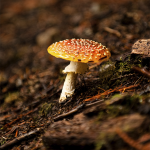 There are two types of mushrooms growing in the wild: the edible ones and the toxic ones. It often takes a mycologist (mushroom expert) to tell them apart. Many people have accidentally been poisoned after they thought certain identification tips were foolproof. Any person or pet that swallows part of a wild mushroom should be assessed by healthcare professionals at FL Poison Information Center at 1-800-222-1222.
There are two types of mushrooms growing in the wild: the edible ones and the toxic ones. It often takes a mycologist (mushroom expert) to tell them apart. Many people have accidentally been poisoned after they thought certain identification tips were foolproof. Any person or pet that swallows part of a wild mushroom should be assessed by healthcare professionals at FL Poison Information Center at 1-800-222-1222.
Symptoms of Mushroom Use
Poison mushrooms can cause one or more of the following problems, depending which type are eaten:
- Fever
- Hallucinations
- Wheezing
- Lung congestion
- Inability to urinate
- Hallucinations
- Watery diarrhea
- Seizures
- Liver failure
- Kidney failure
- Bloody vomiting
- Severe thirst
- Muscle aches
- Coma
- Chest pain
Angel’s Trumpet
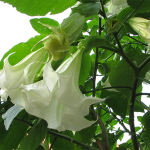 These plants are the size of a bush or tree and produce large pastel-colored flowers that point down. The strength, or the amount of poison in each plant, varies according to its growing conditions. For instance, well-cared-for plants may be more toxic than neglected ones, or vice versa. Teens eat the flowers or boil the seeds to make tea.
These plants are the size of a bush or tree and produce large pastel-colored flowers that point down. The strength, or the amount of poison in each plant, varies according to its growing conditions. For instance, well-cared-for plants may be more toxic than neglected ones, or vice versa. Teens eat the flowers or boil the seeds to make tea.
Symptoms of Angel’s Trumpet Use
Signs of poisoning include:
- Dilated pupils
- Confusion
- Dry, warm skin
- Inability to urinate
- Drowsiness
- Fast heartbeat
- Severe thirst
- Constipation
- Anxiety
Methamphetamine
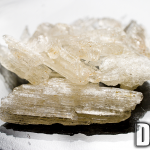 Methamphetamine is a stimulant that closely resembles amphetamine on a chemical level. Also known as meth, crystal, chalk or ice, this drug is most often seen as a white, odorless powder with a bitter taste. It can be taken orally, smoked, snorted, or injected.
Methamphetamine is a stimulant that closely resembles amphetamine on a chemical level. Also known as meth, crystal, chalk or ice, this drug is most often seen as a white, odorless powder with a bitter taste. It can be taken orally, smoked, snorted, or injected.
Symptoms of Methamphetamine Use
Crystal methamphetamine use is associated with numerous serious physical problems. The drug is a stimulant similar to cocaine, but much more addictive and dangerous. It can cause rapid heart rate, increased blood pressure, and damage to the brain cells. Regular use of the drug can result in inflammation of the heart lining. Overdoses can cause hyperthermia (elevated body temperature), convulsions, and death.
Individuals who use crystal methamphetamine also may have episodes of violent behavior, paranoia, anxiety, confusion, and insomnia. The drug can produce psychotic symptoms that last for months or years after an individual has stopped using the drug.
“Meth labs” are neighborhood hazards that are often booby-trapped and contain ingredients that explode and burn easily. Many people may be unaware that they’re living near a meth lab. Here are some things to look for:
- Unusual, strong odors (like cat urine, ether, ammonia, acetone or other chemicals)
- Residences with windows blacked out
- Renters who pay their landlords in cash
- Lots of traffic or people coming and going at unusual times; there may be little traffic during the day, but at night the activity increases dramatically
- Excessive trash including large amounts of items such as antifreeze containers, lantern fuel cans, red chemically-stained coffee filters, drain cleaner and duct tape
- Unusual amounts of clear glass containers being brought into the home
For more information, read the article on Drug Facts: Methamphetamine.
Bath Salts
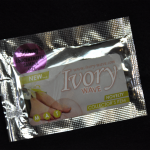 What’s in Bath Salts?
What’s in Bath Salts?
A white powder sold in tea-bag size packets labeled “Bath Salts,” “Plant Food” or “Ant Killer” is actually a new high, not a household product. The chemical is a man-made version of the khat plant. This type of synthetic drug is called a cathinone substitute and may contain methylone, mephedrone, MDPV, DMAA or 2-DPMP or related ingredients. The crystals may contain the anesthetic lidocaine and other contaminants. They are sold online or in convenience stores, but just because they’re sold over-the–counter does not make them safe. There are various brand names for this drug: Ivory Wave, Vanilla Sky, Zoom2, Pixie Dust, Sextacy, Ocean Burst, Purple Rain, Hurricane Charlie and many more.
Why Do People Snort Bath Salts?
The products were rumored to be legal substitutes for cocaine, ecstasy or ritalin. Until recently, the ingredients were legal. As of July 2012, the most common ingredients for bath salts are illegal to buy, sell or possess in the U.S.A. It is scheduled as a Class I drug with penalties similar to marijuana possession. New synthetic chemicals are being created to get around the law.
How Popular Are Bath Salts?
Poison Centers have been tracking reports of bath salts cases. According to the National Poison Data System and the Florida Poison Information Center Network Data:
- In 2010, there were 303 cases in the USA and 23 in Florida.
- In 2011, there were 6,072 cases in the USA and 165 in Florida.
- In 2012, there were 2,654 cases in the USA and 93 in Florida.
- In 2013, there were 996 cases in the USA and 47 in Florida
- In 2014, there were 368 cases in the USA and 23 in Florida.
What Happens to People Who Abuse Bath Salts?
The nervous system is stimulated, creating a burst of strength along with high blood pressure, fast heart rate, increased alertness, anxiety, fever and muscle cramps. Unlike cocaine, there are frightening delusions, hallucinations and paranoia. There are multiple accounts of people thinking that monsters or policemen are chasing them. This has resulted in combativeness, assaults and suicides. Even small amounts of the drug can cause users to feel out of control and unable to trust people who are trying to care for them. Users have ended up in hospitals, needing heavy sedation and the assistance of breathing machines until the agitation and combativeness got under control. Some people never recover and die from the effects of seizures, high fever, heart or kidney damage.
For more information about these products:
National Institute of Drug Abuse: Drug Facts: Synthetic Cathinones:
http://www.drugabuse.gov/publications/drugfacts/synthetic-cathinones-bath-salts
Emerging Hazards
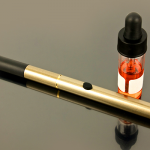 Liquid Nicotine in E-Cigarettes and Refills
Liquid Nicotine in E-Cigarettes and Refills
The nicotine in cigarettes, cigars and chewing tobacco has always been hazardous to children — as little as one cigarette can require a trip to the local emergency department. Poison centers have always received calls about small children who have eaten a cigarette or cigarette butt, or sipped from a spit cup from someone using chewing tobacco. These calls often required hospital treatment if the child ate too much. Now, poison centers nationwide are dealing with new products that pose a risk to kids and teens — “e-cigarettes” — and the liquid nicotine used to refill them.
E-cigarettes vaporize concentrated nicotine (and other ingredients) that users inhale through small devices that can resemble cigarettes, a pack of cards, or an ink pen. Poison control centers across the U.S. have seen a marked increase in kids and teens ingesting the “e-liquid” used to refill the devices. These liquids are available with fruity or candy-like flavors and can contain many cigarettes’ worth of nicotine in a bottle that may not be child-resistant. Nicotine overdose can be fatal and several Florida children have visited hospitals with severe vomiting and seizures as a result of sipping the concentrated syrup. These days there are many products containing nicotine available in pharmacies, online and through retail outlets. These include patches, lozenges, gum, and, of course, the vials or squeeze bottles of concentrated liquid. All of these products are potentially dangerous.
Nicotine Amounts:
- Cigarette: 15-30 mg
- Cigarette butts: 5-7mg each
- Cigar: 15-40 mg
- Snuff: 13-16 mg (1 gm of wet snuff)
- Chewing tobacco: 6-8 mg
- Nicotine gum: 2 or 4 mg
- Transdermal patches: 8.3–114 mg
- Nasal spray: 1 mg (1 spray each nostril)
- Nicotine inhaler systems(e-cigs): 10 mg
- E-cig refills are variable amounts
Florida’s Poison Control Centers urge parents to keep these products out of the reach of children and teens — and to call for any exposure to unusual levels of nicotine. Nicotine poisoning is treatable and poison specialists can walk callers through the necessary steps for their situation.

